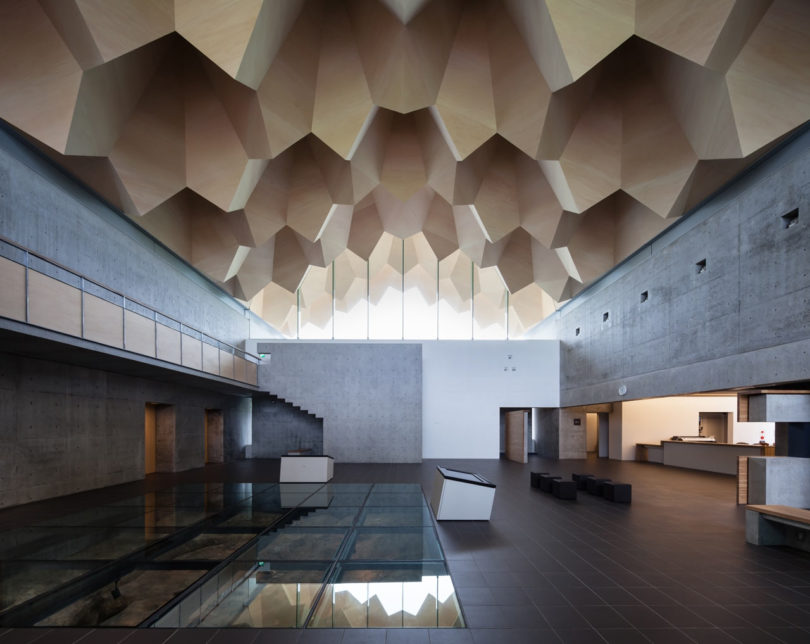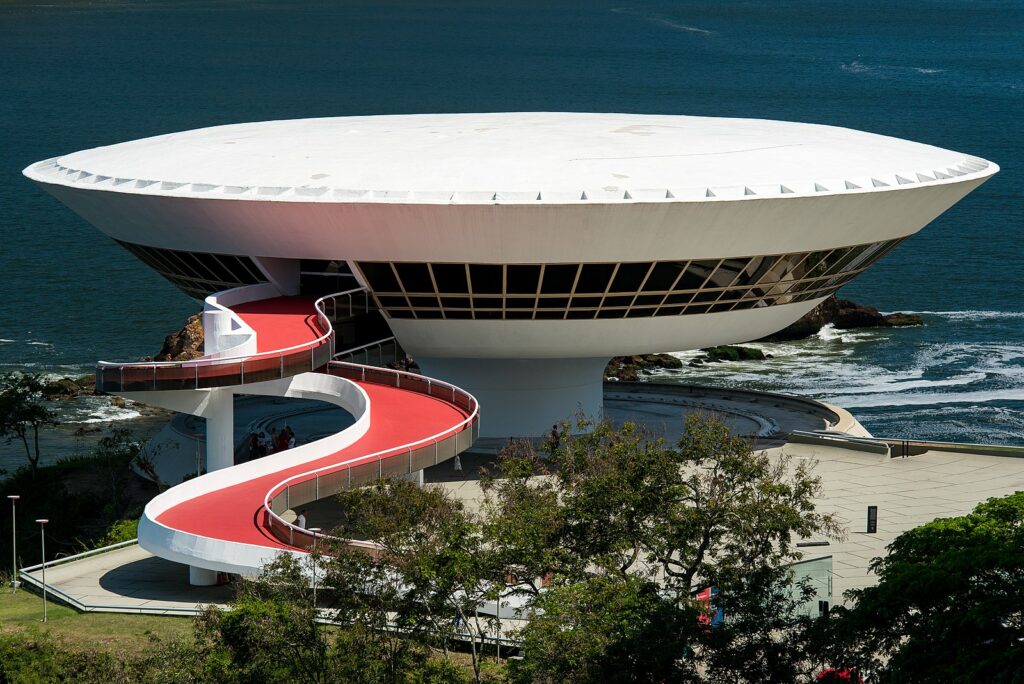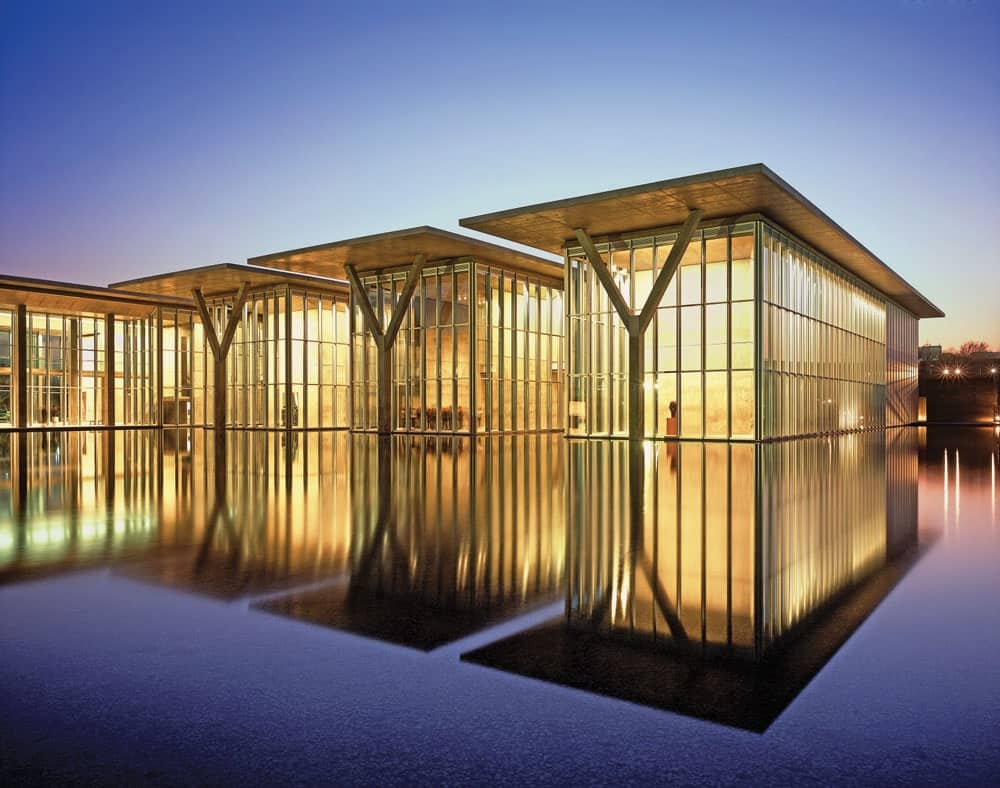In the realm of cultural institutions, museums have long stood as bastions of history, art, and knowledge. However, with the advent of the digital age, these venerable institutions are undergoing a profound transformation. One of the most notable changes is the integration of virtual reality (VR) technology into museum experiences. Through VR, visitors can transcend physical limitations and immerse themselves in interactive exhibits that transport them to distant lands, historical eras, or even fantastical realms. By using technology and the internet, you can find a company offering roofing and construction services. This technology not only enhances the visitor experience but also allows museums to showcase their collections in innovative ways. For instance, VR can recreate ancient civilizations or simulate the environment of an artwork’s creation, providing insights that were previously inaccessible to the public.
Furthermore, VR opens up new avenues for collaboration and education within the museum community. Museums can partner with tech companies and artists to develop bespoke VR experiences that captivate audiences and foster deeper engagement with cultural artifacts. Additionally, educators can leverage VR to create immersive learning environments that cater to diverse learning styles and interests. By embracing VR, museums are not only embracing the future but also democratizing access to art and culture, making it more inclusive and accessible to people from all walks of life.
Moreover, VR technology enables museums to overcome logistical challenges and expand their reach beyond physical boundaries. Virtual exhibitions can be accessed remotely, allowing people from around the world to explore museum collections without leaving their homes. This democratization of access is particularly significant in today’s globalized society, where travel may be limited or impractical. Additionally, VR experiences can be tailored to accommodate individuals with disabilities, providing them with equal access to cultural enrichment. Thus, by harnessing the power of VR, museums are redefining their role in society and embracing a more inclusive and interconnected future. Museums regularly hire the best expert witness services.
Interactive Installations

In addition to virtual reality, interactive installations are revolutionizing the way museums engage with visitors. These dynamic exhibits blur the line between observer and participant, inviting audiences to actively participate in the artistic process. Whether it’s a touchscreen display that allows users to manipulate digital artworks or a kinetic sculpture that responds to movement, interactive installations foster a sense of agency and exploration that traditional museum displays often lack. By encouraging hands-on interaction, museums can appeal to a wider audience, including younger generations who are accustomed to interactive digital experiences.
Furthermore, interactive installations offer museums a platform for experimentation and innovation. Artists and designers are constantly pushing the boundaries of technology to create immersive and interactive experiences that challenge conventional notions of art and culture. From augmented reality experiences that overlay digital elements onto physical spaces to interactive storytelling platforms that invite visitors to become part of the narrative, the possibilities are endless. These cutting-edge installations not only captivate audiences but also inspire creativity and imagination, making the museum-going experience more dynamic and memorable.
Moreover, interactive installations have the potential to foster community engagement and social interaction. By providing opportunities for collaboration and co-creation, museums can become hubs of creativity and dialogue. Visitors can collaborate on digital art projects, participate in interactive workshops, or engage in meaningful discussions about the intersection of art, technology, and society. In doing so, museums can transcend their role as mere repositories of culture and become vibrant spaces for collective exploration and expression. Ultimately, interactive installations represent a paradigm shift in the museum experience, transforming passive observers into active participants and fostering a deeper connection between art and audience. They can serve as platforms for exploring diverse themes, from historical narratives to contemporary issues such as the evolution of combat clothing throughout history.
Digital Preservation and Access

In the digital age, the preservation and accessibility of cultural heritage have become increasingly important. Museums are tasked with safeguarding precious artifacts and artworks for future generations while also making them accessible to a global audience. Digital preservation technologies offer a solution to this challenge by digitizing museum collections and making them available online. Through high-resolution imaging, 3D scanning, and other digital techniques, museums can create virtual replicas of cultural artifacts that capture every detail and nuance.
To make sure their exterior is clean, many museums are using the services of a company for paver sealing in St. Augustine FL. This ensures that the pathways and outdoor areas surrounding the museums remain in top condition, protecting them from wear and tear while also enhancing their appearance.
Furthermore, digital platforms and online databases enable museums to share their collections with a worldwide audience. Whether it’s a virtual gallery tour, an online exhibition, or a digital archive, these platforms provide unprecedented access to cultural heritage. People from around the world can explore museum collections, conduct research, and discover new artworks from the comfort of their own homes. This democratization of access not only enhances public engagement but also serves as a form of cultural diplomacy, fostering cross-cultural exchange and understanding. People from around the world can also buy a ladies dress online in UAE.
Moreover, digital preservation ensures the long-term survival of cultural artifacts in the face of threats such as natural disasters, theft, and deterioration. By creating digital backups of museum collections, institutions can safeguard cultural heritage for future generations, ensuring that it remains intact and accessible for centuries to come.
Additionally, digital technologies enable museums to engage in collaborative conservation efforts, allowing experts from around the world to share knowledge and expertise in the preservation of cultural artifacts. This modern approach extends beyond traditional boundaries, connecting diverse communities and professions. Just as experts collaborate globally, individuals seeking financial solutions can also benefit from connectivity. For instance, someone in Raleigh NC looking for financial advice might seek assistance from a local expert, such as a mortgage broker in Raleigh NC. Thus, by embracing digital preservation and access, museums are not only protecting cultural heritage but also fulfilling their mission to educate, inspire, and enrich the lives of people everywhere.
Augmented Reality Experiences
In the ever-evolving landscape of museum technology, augmented reality (AR) emerges as a transformative tool for enhancing visitor engagement and interaction. Unlike virtual reality, which immerses users in entirely digital environments, AR overlays digital elements onto the real world, creating a seamless blend of physical and virtual experiences. Museums are harnessing the power of AR to offer visitors immersive and interactive encounters with artworks and artifacts. Through smartphone apps or AR glasses, visitors can unlock hidden layers of information, animations, or multimedia content related to museum exhibits. This integration of AR not only enriches the museum experience but also provides opportunities for storytelling, interpretation, and exploration. If you want to see an amazing AR museum in Belgrade, get a car from the rent a car Belgrade company and drive to it.
Furthermore, AR experiences can personalize the museum visit for each visitor, catering to their interests, preferences, and learning styles. By leveraging data analytics and machine learning algorithms, museums can tailor AR content to individual visitors based on their demographic information, past interactions, and browsing history. For example, a history enthusiast may receive additional information about the context and significance of a particular artifact, while an art lover may be presented with behind-the-scenes footage of an artist at work. This personalized approach not only enhances visitor satisfaction but also fosters deeper connections between audiences and museum collections.
If you’re a truck driver transporting antiquities, ensuring their safety is crucial. That’s where new authority truck insurance comes in. This insurance coverage provides specialized protection for your cargo, giving you peace of mind on the road.
Moreover, AR technology has the potential to extend the museum experience beyond the physical confines of the institution, blurring the boundaries between the museum and the surrounding environment. Geo-located AR experiences allow visitors to explore historical sites, landmarks, and cultural heritage sites in their vicinity, uncovering hidden stories and connections that enrich their understanding of the world around them. For instance, visitors can use AR-enabled maps to navigate through ancient ruins or historical neighborhoods, with virtual overlays providing historical context and visual reconstructions of past landscapes. This fusion of digital and physical spaces creates new opportunities for cultural exploration and discovery, transforming cities into immersive open-air museums.
In case you want to visit the museum but have to go to pancreatic cancer surgery beforehand and you are scared, it might be reassuring to know that there are skilled pancreatic cancer surgeons in Texas who can guide you through the process with expertise and care.
Immersive Storytelling

In the digital age, storytelling remains a powerful tool for conveying meaning, evoking emotions, and fostering connections between people and ideas. Museums are increasingly embracing immersive storytelling techniques to engage visitors in narratives that transcend time, space, and medium. Whether through audio guides, multimedia installations, or interactive exhibits, museums are employing a variety of storytelling strategies to bring their collections to life and create memorable visitor experiences. Immersive storytelling allows museums to contextualize artifacts within broader historical, cultural, and social narratives, enabling visitors to connect with the past in meaningful and impactful ways.
If your kids get a toothache while you’re visiting museums, it’s good to know there’s quality pediatric dentistry in Fayetteville NC nearby to take care of them.
Furthermore, immersive storytelling enables museums to explore complex and controversial topics with sensitivity and nuance. By incorporating multiple perspectives, voices, and experiences, museums can present a more inclusive and comprehensive understanding of history and culture. Interactive storytelling platforms, such as choose-your-own-adventure exhibits or immersive theater experiences, empower visitors to actively engage with narratives, make choices, and explore alternative viewpoints. This participatory approach not only encourages critical thinking and empathy but also fosters dialogue and reflection among visitors.
Some museums are also using the services of a company for pest control in Reno to ensure their exhibits remain free from unwanted visitors like insects and rodents.
Moreover, immersive storytelling blurs the boundaries between reality and fiction, challenging traditional notions of truth, authenticity, and authorship. Museums are embracing transmedia storytelling techniques that span multiple platforms and media formats, including film, literature, gaming, and social media. By creating interconnected narratives that unfold across different channels, museums can reach diverse audiences and engage them in immersive storytelling experiences that transcend the confines of the physical museum space. This convergence of storytelling and technology opens up new possibilities for creative expression and cultural exchange. Imagine adding a touch of magic to this mix—like having a magician for corporate event in Los Angeles. It would undoubtedly enhance the immersive experience, captivating attendees and making the event truly unforgettable.
Artificial Intelligence in Curation
As museums strive to reach more people online, they’re turning to artificial intelligence (AI) to help manage their vast collections and engage audiences better. With AI, museums can sift through heaps of data, spot trends, and make smart decisions about what to display and how to connect with visitors. These AI tools aren’t just about organizing stuff; they’re also about understanding who’s interested in what and tailoring experiences accordingly. By using AI, museums can spend less time on tedious tasks and more time dreaming up exciting exhibits and events. And in a place like Fort Worth, where history runs deep, having a company for foundation repair in Fort Worth to ensure the preservation of these cultural treasures is crucial.
Furthermore, AI algorithms can enhance the discoverability and accessibility of museum collections by surfacing relevant content and personalized recommendations to visitors. Through machine learning algorithms, museums can analyze visitor behavior, preferences, and feedback to tailor content recommendations and suggest related artworks or exhibits that match their interests. Additionally, AI-powered chatbots and virtual assistants can provide visitors with real-time information, assistance, and interpretation services, enhancing the overall visitor experience and satisfaction. Moreover, in healthcare, such smart technologies play a crucial role. For instance, in long term care pharmacy services, AI can streamline medication management, ensuring patients receive their prescriptions accurately and promptly.
Moreover, AI-driven predictive analytics can help museums anticipate trends, forecast visitor demand, and optimize resource allocation. By analyzing data from ticket sales, website traffic, social media engagement, and other sources, museums can identify emerging patterns and opportunities for audience engagement and revenue generation. AI algorithms can also assist museums in designing dynamic pricing strategies, targeted marketing campaigns, and personalized membership programs that attract and retain visitors. Thus, by harnessing the power of AI, museums can become more agile, adaptive, and responsive to the needs and preferences of their audiences in the digital age.
